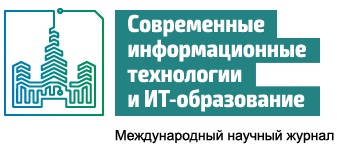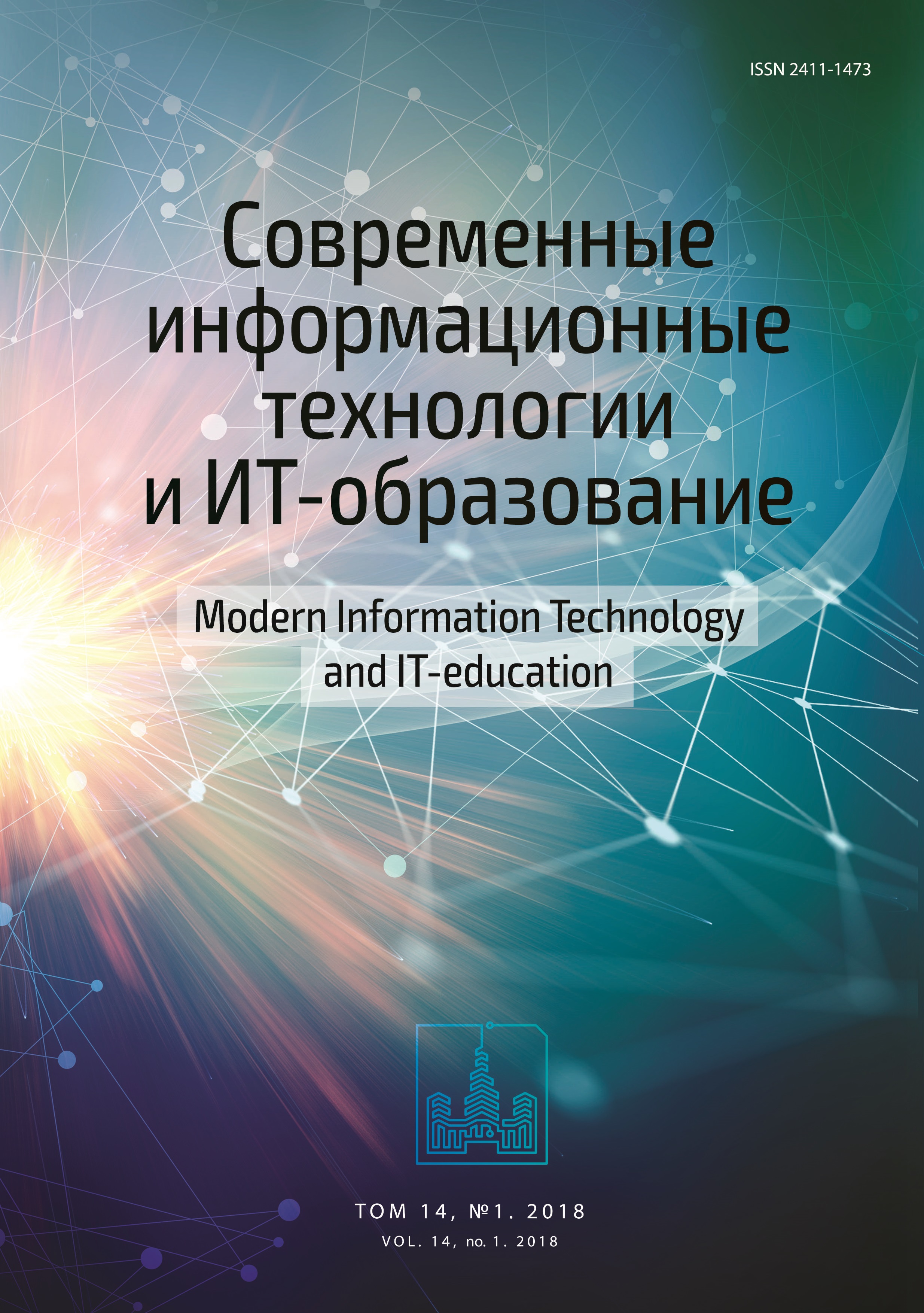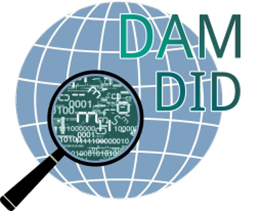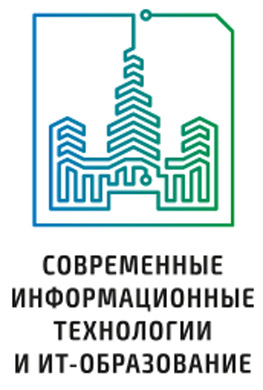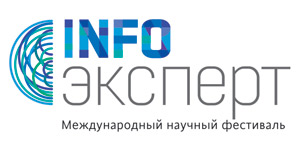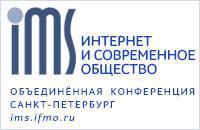НЕЙРОСЕТЕВОЙ МЕТОД ВОССТАНОВЛЕНИЯ НАЧАЛЬНОГО ПРОФИЛЯ УДАРНОЙ ВОЛНЫ
Аннотация
В данной работе мы применяем нейросетевое моделирование для решения обратной задачи математической физики с системой нелинейных дифференциальных уравнений в частных производных гиперболического типа. В задаче начальные условия неизвестны и восстанавливаются по измерениям, проведённым в более поздний момент времени. Для этого мы используем разработанную нами методологию построения приближённых математических моделей по дифференциальным уравнениям и дополнительным данным. Известно, что обратные задачи являются трудными для применения классических численных методов решения краевых задач для дифференциальных уравнений в частных производных и требует применения различных искусственных приёмов. Наш подход позволяет решать как прямые, так и обратные задачи практически одинаковым образом. Мы восстанавливаем начальный профиль распределения давления в трубе, в которой распространяется ударная волна, по результатам измерений на датчике, расположенном в конце трубы. В этой нейросетевой модели мы применяем персептрон с одним скрытым слоем с функцией активации в виде гиперболический тангенс. Известно, что такая нейронная сеть является универсальным аппроксиматором, т.е. позволяет сколь угодно точно приблизить функцию из достаточно широкого класса (в частности, к такому классу принадлежит и искомое решение задачи). Мы опробовали и другие архитектуры нейронных сетей, в частности, сеть с радиальными базисными функциями (RBF), но для данной задачи они оказались менее подходящими. Ранее мы применяли такой подход к задачам с известным аналитическим решением с целью проверки результатов применения метода. Наш метод показал себя достаточно точным и устойчивым к ошибках в исходных данных. Особенностью данной работы является применение метода к задаче с реальными измерениями. Полученные результаты позволяют рекомендовать предложенный метод для решения и других подобных задач.
Литература
[2] Angelier J., Tarantola A., Valette B., Manoussis S. Inversion of field data in fault tectonics to obtain the regional stress. Geophysical Journal of the Royal Astronomical Society. 1982; 69(3):607–621. DOI: https://doi.org/10.1111/j.1365-246X.1982.tb02766.x
[3] Baymani M., Kerayechian A., Effati S. Artificial Neural Networks Approach for Solving Stokes Problem. Applied Mathematics. 2010; 1(4):288-292. DOI: https://dx.doi.org/10.4236/am.2010.14037
[4] Backus G. Inference from inadequate and inaccurate data, Mathematical problems in the geophysical sciences: Lectures in Applied Mathematics, 14, American Mathematical Society, Providence, RI, 1971.
[5] Bamberger A., Chavent G., Hemon Ch., Lailly P. Inversion of normal incidence seismograms. Geophysics. 1982; 47(5):757–770. DOI: https://doi.org/10.1190/1.1441345
[6] Barnes C., Charara M., Tarantola A. Monte Carlo inversion of arrival times for multiple phases in OSVP data. 68th Ann. Internat. Mtg. Soc. Expl. Geophys. 1998. Pp. 1871–1874.
[7] Beliaeva A.R., Mishina A.S., Tarkhov D.A., Shemyakina T.A. Construction of the neural network model of the shock wave on differential equations and experimental data. Proceedings of the X International Conference on NonEquilibrium Processes in Nozzles and Jets (NPNJ’ 2014). M.: Publishing house MAI, 2014. Pp. 460–461. (In Russian)
[8] Binder K. (Ed.) Monte Carlo methods in statistical physics. Berlin: Springer-Verlag, 1979. Vol. 7, 416 pp. DOI: https://doi.org/10.1007/978-3-642-82803-4
[9] Caers J.K., Srinivasan S., Journel A.G. Geostatistical quantification of geological information for a fluvial-type North Sea reservoir. SPE Reservoir Evaluation and Engineering. 2000; 3(5):457–467. DOI: https://doi.org/10.2118/66310-PA
[10] Cao D., Beydoun W.D., Singh S.C., Tarantola A. A simultaneous inversion for background velocity and impedance maps. Geophysics. 1990; 55(4):458–469. DOI: https://doi.org/10.1190/1.1442855
[11] Lai C.G., Wilmanski K. Surface Waves in Geomechanics: Direct and Inverse Modelling for Soils and Rocks. Springer-Verlag Wien. 2005. Vol. 481. 386 pp. DOI: https://doi.org/10.1007/3-211-38065-5
[12] Gauthier O., Virieux J., Tarantola A. Two-dimensional inversion of seismic waveforms: Numerical results. Geophysics. 1986; 51(7):1387–1403. DOI: https://doi.org/10.1190/1.1442188
[13] Geman S., Geman D. Stochastic relaxation, Gibbs distributions, and the Bayesian restoration of images. IEEE Transactions on Pattern Analysis and Machine Intelligence. 1984. Vol. PAMI-6, issue 6. Pp. 721–741. DOI: https://doi.org/10.1109/TPAMI.1984.4767596
[14] Grasso J.R., Cuer M., Pascal G. Use of two inverse techniques. Application to a local structure in the New Hebrides island arc. Geophysical Journal of the Royal Astronomical Society. 1983; 75(2):437–472. DOI: https://doi.org/10.1111/j.1365-246X.1983.tb01935.x
[15] Groetsch C.W. Inverse Problems. Washington, DC: The Mathematical Association of America, 1999. 222 pp.
[16] Hammersley J.M., Handscomb D.C. Monte-Carlo methods (Monographs on Statistics and Applied Probability). London: Chapman and Hall, 1964.
[17] Hastings W.K. Monte Carlo sampling methods using Markov Chains and their applications. Biometrika. 1970; 57(1):97–109.
[18] Hayati M., Karami B. Feedforward Neural Network for Solving Partial Differential Equations. Journal of Applied Sciences. 2007; 7(19):2812-2817. Available at: http://docsdrive.com/pdfs/ansinet/jas/2007/2812-2817.pdf (accessed 20.02.2018).
[19] Igel H., Djikpéssé H., Tarantola A. Waveform inversion of marine reflection seismograms for P impedance and Poisson’s ratio. Geophysical Journal International. 1996; 124(2):363–371. DOI: https://doi.org/10.1111/j.1365-246X.1996.tb07026.x
[20] Ikelle L.T., Diet J.P., Tarantola A. Linearized inversion of multi offset seismic reflection data in the ω-k domain. Geophysics. 1986; 51(6):1266–1276. DOI: https://doi.org/10.1190/1.1442179
[21] Jackson D.D., Matsu’ura M. A Bayesian approach to nonlinear inversion. Journal of Geophysical Research: Solid Earth. 1985; 90(B1):581–591. DOI: https://doi.org/10.1029/JB090iB01p00581
[22] Kainov N.U., Tarkhov D.A., Shemyakina T.A. Application of neural network modeling to identification and prediction in ecology data analysis for metallurgy and welding industry. Nonlinear Phenomena in Complex Systems. 2014; 17(1):57–63.
[23] Keilis-Borok V.J. The inverse problem of seismology. Proceedings of the International School of Physics Enrico Fermi. Course L, Mantle and Core in Planetary Physics, J. Coulomb and M. Caputo (Ed.). New York: Academic Press, 1971.
[24] Kennett B.L.N. Some aspects of non-linearity in inversion. Geophysical Journal of the Royal Astronomical Society. 1978; 55(2):373–391. DOI: https://doi.org/10.1111/j.1365-246X.1978.tb04278.x
[25] Kirkpatrick S., Gelatt C.D. Jr., Vecchi M.P. Optimization by simulated annealing. Science. 1983; 220(4598):671–680. DOI: https://doi.org/10.1126/science.220.4598.671
[26] Largris I.E., Likas A., Fotiadis D.I. Artificial Neural Networks for Solving Ordinary and Partial Differential Equations. IEEE transaction on neural networks. 1998; 9(5):987-1000. DOI: https://doi.org/10.1109/72.712178
[27] Metropolis N., Rosenbluth A., Rosenbluth M., Teller A., Teller E. Equation of state calculations by fast computing machines. The Journal of Chemical Physics. 1953; 21(6):1081–1092.
[28] Metropolis N., Ulam S. The Monte Carlo method. Journal of the American Statistical Association. 1949; 44(247):335–341.
[29] Mosegaard K., Tarantola A. Monte Carlo sampling of solutions to inverse problems. Journal of Geophysical Research. 1995; 100(B7):12431–12447. Available at: http://www.ipgp.fr/~tarantola/Files/Professional/Papers_PDF/MonteCarlo_latex.pdf (accessed 20.02.2018).
[30] Mosegaard K., Tarantola A. Probabilistic approach to inverse problems. International Geophysics. 2002; Vol. 81A. International Handbook of Earthquake & Engineering Seismology. Pp. 237–265. DOI: https://doi.org/10.1016/S0074-6142(02)80219-4
[31] Parker R.L. Geophysical inverse theory. Princeton, NJ: Princeton University Press, 1994. 400 pp.
[32] Pica A., Diet J.P., Tarantola A. Nonlinear inversion of seismic reflection data in a laterally invariant medium. Geophysics. 1990; 55(3):284–292. DOI: https://doi.org/10.1190/1.1442836
[33] Pirumov U.G., Roslyakov G.S. Numerical methods of gas dynamics. M.: Publishing Graduate School, 1987. 232 pp. (In Russian)
[34] Press F. Earth models obtained by Monte-Carlo inversion. Journal of Geophysical Research. 1968; 73(16):5223–5234. DOI: https://doi.org/10.1029/JB073i016p05223
[35] Rietsch E. The maximum entropy approach to inverse problems. J. Geophys. 1977; 42:489-506.
[36] Rothman D.H. Large Near-surface Anomalies, Seismic Reflection Data, and Simulated Annealing: Ph.D. Thesis, Stanford University. 1985a.
[37] Rothman D.H. Nonlinear inversion, statistical mechanics, and residual statics estimation. Geophysics. 1985; 50(12):2784–2796. DOI: https://doi.org/10.1190/1.1441899
[38] Rothman D.H. Automatic estimation of large residual statics corrections. Geophysics. 1986; 51(2):332–346. DOI: https://doi.org/10.1190/1.1442092
[39] Tarantola A. Inversion of seismic reflection data in the acoustic approximation. Geophysics. 1984; 49(8):1259–1266. DOI: https://doi.org/10.1190/1.1441754
[40] Tarkhov D.A., Shemyakina T.A., Beliaeva A.R. Restoration of the initial profile of the shock wave on differential equations and experimental data. Problems of informatics in education, management, economics and technics. Proceedings of the XIV International Science and Technology conference. Penza: Privolzhsky House of Knowledge, 2014. Pp. 175–178. (In Russian)
[41] Tarkhov D.A. Neural network models and algorithms. M.: Publishing of Radiotechnika, 2014. 348 p. (In Russian)
[42] Tran-Canh D., Tran-Cong T. Computation of Viscoelastic Flow Using Neural Networks and Stochastic Simulation. Korea-Australia Rheology Journal. 2002; 14(4):161-174. Available at: https://www.cheric.org/PDF/KARJ/KR14/KR14-4-0161.pdf (accessed 20.02.2018).
[43] Vasilyev A.N., Tarkhov D.A. Neural network methods and algorithms of mathematical modeling. Saint Petersburg: Publishing of Peter the Great Saint Petersburg Polytechnic University, 2014. 582 p. (In Russian)
[44] Vasilyev A.N., Tarkhov D.A., Shemyakina T.A. Neural network approach to problems of mathematical physics. Saint Petersburg: Publishing of Nestor-Historia, 2015. 260 p. (In Russian)

Это произведение доступно по лицензии Creative Commons «Attribution» («Атрибуция») 4.0 Всемирная.
Редакционная политика журнала основывается на традиционных этических принципах российской научной периодики и строится с учетом этических норм работы редакторов и издателей, закрепленных в Кодексе поведения и руководящих принципах наилучшей практики для редактора журнала (Code of Conduct and Best Practice Guidelines for Journal Editors) и Кодексе поведения для издателя журнала (Code of Conduct for Journal Publishers), разработанных Комитетом по публикационной этике - Committee on Publication Ethics (COPE). В процессе издательской деятельности редколлегия журнала руководствуется международными правилами охраны авторского права, нормами действующего законодательства РФ, международными издательскими стандартами и обязательной ссылке на первоисточник.
Журнал позволяет авторам сохранять авторское право без ограничений. Журнал позволяет авторам сохранить права на публикацию без ограничений.
Издательская политика в области авторского права и архивирования определяются «зеленым цветом» в базе данных SHERPA/RoMEO.
Все статьи распространяются на условиях лицензии Creative Commons «Attribution» («Атрибуция») 4.0 Всемирная, которая позволяет другим использовать, распространять, дополнять эту работу с обязательной ссылкой на оригинальную работу и публикацию в этом журналe.
